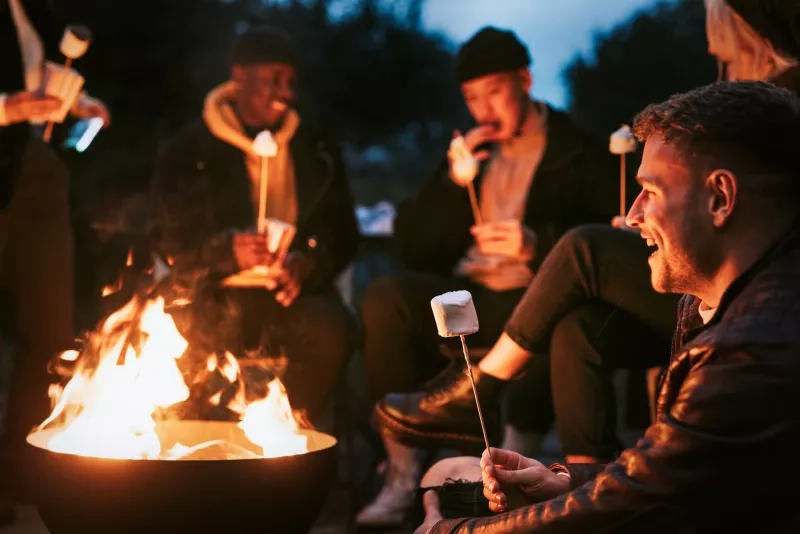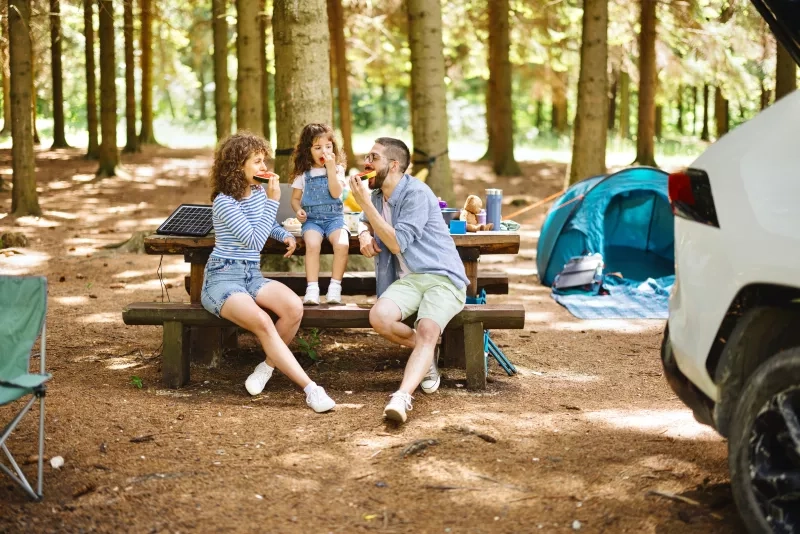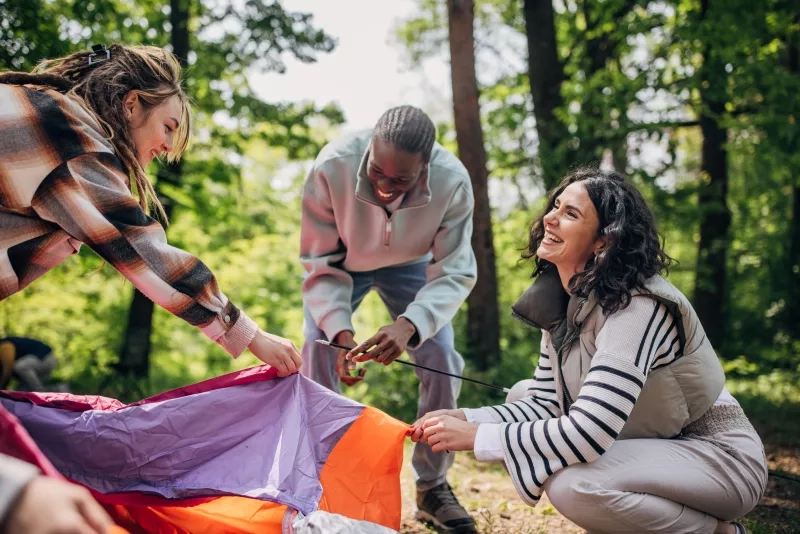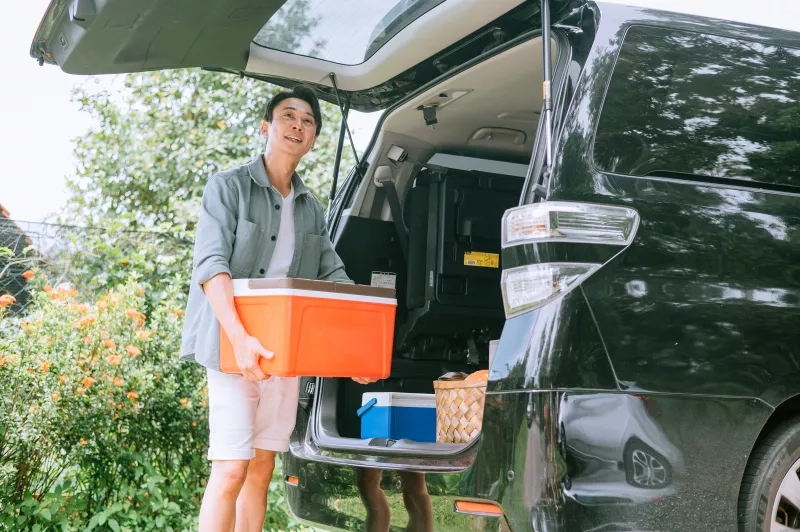
First time camper? Here’s how to camp like a pro
5 Minute Read
Camping is the ultimate summer activity in Ontario. Long, warm days in the woods give way to cool nights under the stars—perfect for activity-filled afternoons and evenings around the fire. Whether you’re hiking, swimming, cycling or relaxing in nature, a weekend spent at one of Canada’s beautiful campgrounds is the perfect escape from the city.
If you’ve never been camping before, planning your trip can seem intimidating. Between buying the right gear, understanding etiquette and staying safe in the woods, it’s easy to get overwhelmed. Although there can be a learning curve, the great outdoors is for everyone—so here’s what you need to know before you head to the campground.
Finding the right campsite

There are plenty of national parks in Ontario to choose from, depending on what you’re looking for. When booking your campsite, consider your needs, including your group size and desired comforts.
First, you’ll want to choose from the different kinds of camping. Frontcountry camping is best for beginners. Some front country campgrounds have water and electricity hookups, which are designed for RVs and campers. Others, called unserviced campgrounds, are better for tents. Most campsites are intended for single families or a few friends, but group campsites are also available so you can bring the party. Unlike frontcountry camping, backcountry camping is for seasoned wilderness explorers. Accessing these sites requires hiking, canoeing or kayaking, offering a more remote and peaceful stay.
Comfort camping is also an option for anyone not ready to sleep on the ground. Parks Canada offers accommodations like oTENTiks, cabins and yurts if you’d prefer to have a roof over your head.
Interested in renting out your RV? CAA Members earn 125 CAA Dollars when they list their RV through RVezy and complete their first rental.
What to pack

When you’re camping, it’s best to be overprepared. Do your research and make a packing checklist in advance to ensure you don’t forget anything.
With changing weather, you’ll want to prepare for a variety of different circumstances. Bring outdoor gear like a hat, raincoat, bug spray and sunscreen. Nights can be warm or cold, so bring both cozy sweaters and light pyjamas. Plan outfits that are easy to layer and adjust to changing temperatures throughout the day.
Remember to bring a flashlight and extra batteries, plus a portable charger for your devices. Keep a first aid kit in your car and hiking bag. Multi-purpose items like clothespins, bungee cords, tarps and duct tape are always good to have on hand in case you need them.
Cooking while you camp requires more forethought than a regular weeknight dinner, so you have to prep your meals before you go. You’ll want to bring food that’s easy to cook and clean, which usually means pre-portioning ingredients to cut down on dishes. Pack everything in an ice-filled cooler and make sure all your containers are waterproof.
Setting up your campsite

There’s nothing worse than having to figure out poles, pegs and wires when it’s dark outside, so you’ll want to leave home early and set up as soon as you arrive. Take a stroll around your campsite to determine the best place for your tent. If you can, choose the highest ground on the site in case it rains. A prime spot is one free of roots and rocks, located a safe distance away from the fire pit and your car’s exhaust pipe.
If you’ve never used your tent before, practice setting it up at home before your trip. You’ll feel more confident once you reach your campsite, and if you’re missing any pieces, you’ll know before you take it into the wilderness with you.
When packing up, dry out your gear before you put it away to prevent mould and keep everything in good shape for next time.
Keeping animals and yourself safe

Even though many campsites have modern amenities, always be aware that you’re still in the wilderness. Research your campground’s resident wildlife, respect animal habitats and learn what to do if you encounter them. Remember that feeding animals in Parks Canada parks is illegal. For your safety and theirs, don’t approach animals and don’t share your snacks with them.
You’ll want to pay special attention to how you store your food. After cooking, put food, dishes and coolers away in your car promptly. The same goes for scented products like soap, toothpaste and deodorant—don't keep these items in your tent, as they could bring hungry animals to your campsite.
Be bug safe and keep a special eye out for ticks. Wear pants and long socks on hikes, don’t walk through long grass and do tick checks every night before you go to sleep.
Above all, be respectful

A campground is like a little community, which means everyone has a responsibility to make it an excellent experience for all. You can help by always following camping etiquette.
Keep your volume down and be kind to your campsite neighbours. Campgrounds have shared roads, so watch out for wildlife, follow speed limits and be careful of children and cyclists as you drive. Hike safely by staying on marked trails and not disturbing wildlife. Take all your garbage out of the park with you or dispose of it in designated bins.
When building a fire for delicious s’mores, don’t bring your own firewood, as this can transport invasive species into the park. Only use designated fire pits and never leave a fire unattended—something as small as a stray spark can cause an ecological disaster.
Although dogs are lots of fun when camping, it's essential to keep them on a leash and clean up after them. Not all campgrounds welcome pets, so be sure to research dog-friendly campsites before heading out.
Ready for adventure? Don’t forget your CAA Membership
Make sure to include your CAA Membership on your packing list. Whether you’re camping near or far, a CAA Membership will help you get there with benefits when you shop at Rewards Partners like Columbia, L.L. Bean, Gear Up for Outdoors, Mountain Warehouse and Decathlon.
You can also save on the way with Shell. CAA Members save three cents per litre on fuel and ten per cent on snacks and drinks at participating Shell locations.




